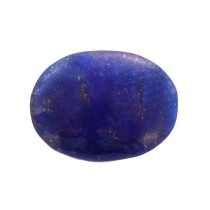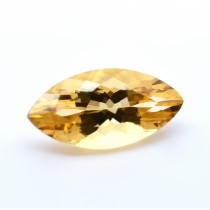Wörterbuch der Begriffe
Wir verwenden zur Beschreibung von Produkten im Shop eine Reihe von Begriffen und Bezeichnungen. Dabei geht es vor allem darum, Ihnen ein möglichst genaues Verständnis der Produktbeschreibung zu ermöglichen. Die folgende Liste versucht, einige dieser Begriffe zu erklären.
1. Produktkategoriename:
Edelsteine sind seltene und wunderschön gefärbte Mineralien, die für ihre Verwendung in Schmuck und Dekorationsgegenständen geschätzt werden. Diese Steine sind nicht nur für ihre ästhetischen Qualitäten bekannt, sondern auch für ihre Symbolik und ihre Halbedelsteineigenschaften. Die vier Mineralien, die zur Kategorie der Edelsteine gehören, sind: Diamant, Rubin, Saphir und Smaragd.
Halbedelsteine sind eine gebräuchliche Bezeichnung für bestimmte Kategorien von Mineralien oder organischen Materialien mit ästhetischen und dekorativen Eigenschaften, die jedoch nicht als Diamanten, Rubine, Saphire oder Smaragde klassifiziert werden. Ihr korrekter Name in der Nomenklatur lautet „ Edelsteine “. Sie werden häufig in Schmuck und Dekorationsgegenständen verwendet und sind in verschiedenen Farben und Texturen erhältlich.
Perlen sind organische Materialien, die in Muscheln und anderen Weichtieren entstehen. Sie entstehen, wenn ein Reizstoff, beispielsweise ein Sandkorn, in die Schale eindringt und die Weichtiere zum Schutz Perlmuttschichten darum absondern. Natürliche Perlen sind selten und äußerst wertvoll, während Zuchtperlen durch menschliches Eingreifen gezüchtet werden, um die Perlenbildung zu stimulieren.
Natürliche Harze sind pflanzliche Substanzen, die durch die Sekretion von Pflanzen oder bestimmten Organismen entstehen. Diese Harze werden häufig in verschiedenen Bereichen verwendet, darunter in der Parfümindustrie, der Medizin, im Bauwesen und in der chemischen Produktion.
2. Technische Beschreibung der Produkte:
*Name : der Name, unter dem das Produkt vermarktet wird
*Form bezieht sich auf den Umriss oder die Silhouette des geschliffenen Edelsteins. Gängige Formen sind rund, oval, quadratisch (Prinzessin), Smaragd, Herz, Kissen (Kissen/Kissen), Birne (Träne) und viele andere. Jede Form hat ihre eigene Ästhetik und kann beeinflussen, wie Licht vom Stein reflektiert und gestreut wird.
*Farbe : die Farbe des im Shop angezeigten Produkts
*Größe : die Abmessungen des jeweiligen Produkts in Millimetern oder Zentimetern
*Gewicht : das Gewicht des jeweiligen Produkts, ausgedrückt in Karat, Gramm oder Kilogramm
*Reinheit bezieht sich auf das Vorhandensein oder Fehlen von Einschlüssen, inneren Brüchen, Absplitterungen oder anderen Defekten des Produkts, die bei Betrachtung mit bloßem Auge erkennbar sind.
*Verarbeitung : ein Begriff, der die Verfahren oder die Verarbeitung beschreibt, die an einem natürlichen Kristall, Harz oder einem anderen Produkttyp durchgeführt werden.
*Herkunft : der Herkunftsort des Produkts, Minerals oder Stoffes vor oder nach der Verarbeitung
3. Beschreibung der technischen Daten der Produkte:
*Himmelblau: ein hellblauer Farbton der Farbe des klaren Himmels. Der Begriff bezieht sich im Allgemeinen auf die Farbe einiger Topassteine, die mit diesem Farbton behandelt wurden.
*London Blue: ein dunkler Blauton, der ins Indigoblau geht und für eine bestimmte Topasart charakteristisch ist, die zur Erzielung dieser Farbe behandelt wurde.
*Der Begriff „Glaseinlage“ wird üblicherweise zur Beschreibung von Natursteinen verwendet, bei denen eine Behandlung durchgeführt wurde, um innere Risse und Brüche im Kristall zu füllen und so sein Aussehen, seine Qualität und seine Festigkeit zu verbessern.
*Handwerkskunst : Beschreibung einer Art und Weise der Verarbeitung eines Produkts, ohne dass die Herstellungsstandards dieses Produkts eingehalten werden.
*Unsachgemäße handwerkliche Verarbeitung : Bezeichnung für die falsche Art der Verarbeitung eines Produktes. Der Begriff wird für Produkte mit minderwertiger Verarbeitung verwendet.
*Asymmetrische Verarbeitung: Bezeichnung für die mitunter fehlerhafte Herstellung eines Produktes ohne Beachtung allgemein anerkannter geometrischer Regeln.
*Mit bloßem Auge sichtbare Einschlüsse : Beschreibung von Defekten in einem Edelstein, die mit bloßem Auge erkennbar sind. Diese Defekte können Reste ungelöster Mineralstoffe, Gas- oder Flüssigkeitsblasen oder innere Brüche im Kristall sein.













